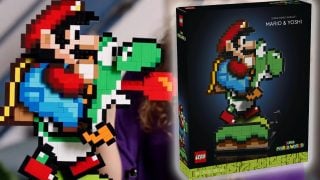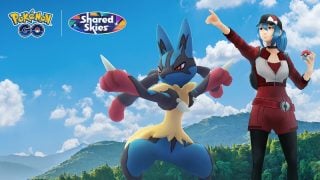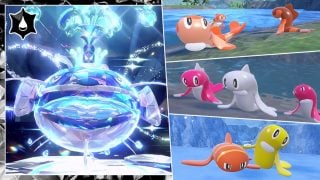Disclaimer: Two games, two reviews! The review below covers Pokémon Sun only. The overall score will be the same for both games.
When I first played Pokémon Red Version and set off with my Charmander way back when, it resonated with me on a level not many games could. I was a kid out to take on the world, collecting and battling these creatures while all my friends did the same. It was so prevalent in my school that our teacher had to impose a “No Pokémon” rule for show and tell, which just reinforced that this was something worth enjoying. While there were times across the generations that the games themselves left a large enough impact on me, such as Silver and Black, the startup and progression to each game began to feel routine. My journey through X, for example, is one I struggle to remember in any deeper way than what Pokémon I journeyed with and general story beats.
That changed with Sun & Moon.
Opening up with your player character moving from the all-too-familiar Kanto to a new home in a new region, it’s once again hitting close to my own life and leaving a lasting impression. Having recently moved across an ocean myself from America to Japan, seeing all the new Alolan sights and faces brought a deeper, personal connection than any past game has since the first. The kind people and new opportunities of the Hawaii-inspired islands are the driving force of this game, bursting at the seams with energy and excitement. This feeling won’t be there for everyone, but for those who have grown up with the games, this sense of starting up new chapters in our lives 20 years later makes Sun & Moon absolutely worth playing even if you’ve been away from the games for a while. For those with less collective badges and championships in their past and those eager to see what makes these games so special, it’s still an exciting new adventure in the world of Pokémon without the nostalgia – bolstered by richer presentation, refined gameplay mechanics, and dynamic new ways to experience the exciting world of Pokémon.
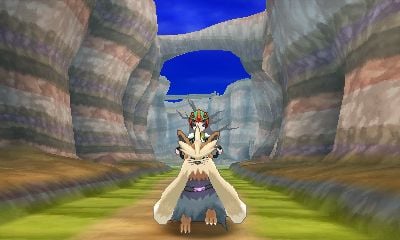
My adventure through Pokémon Sun, despite the new elements I mentioned, really kicked off with the choice of one of the three Alolan starter Pokémon. Rowlet, Litten and Popplio make up a welcome trio of choices with something to like about all of them, and the way you’re introduced to your chosen starter via a small ceremony made the choice feel more personal than any Pokémon game before. They lead the group of new additions to the Pokédex, with plenty of likable designs and type combinations to be found, and with them and existing species the diversity from route to route is usually fantastic.
While the full amount of brand new Pokémon is still a bit lower than the once standard hundred or so every generation, that’s supplemented by Alolan versions of certain Kanto Pokémon. From a floating Raichu to the stunningly styled Dugtrio, this is a great way to give new life to certain Pokémon while adding thematic reasoning behind them tied to the region itself. This kind of integration is one of the best strengths of Sun & Moon, allowing for the region to both be connected to older locales and carve its own niche that’s known rather than implied.
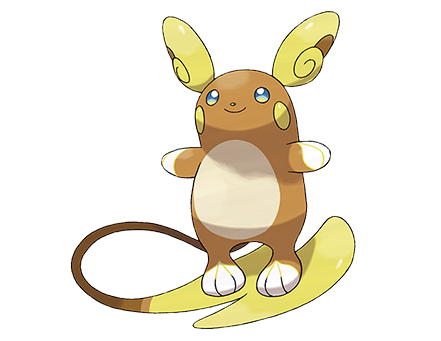
New land, new league, still the very best
It cannot be understated how well the Alola region is fleshed out and what this cultural identity does for the game experience. While previous regions managed to have set pieces or background flavor that made them nice extras to notice when you weren’t battling or catching, Alola’s four islands are not only distinct from each other, but each have cities which are distinct from nearly any other in the game. An early, large city is supremely welcoming and seems like it could have been cut right from a postcard, while later locales range from smaller villages more connected to traditional Alolan culture, some towns that take more Eastern influence in their architecture, and a bustling resort town with luxury hotels.
There are also some great areas outside of the cities to check out, like an overgrown jungle or a mountaintop observatory that has to be reached by bus. This goes beyond noting what spots correspond to real world influences and instead makes Alola into a place where you actively feel the spirit of its inspiration. The liveliness that was the aim for the Alola region is felt immediately and throughout, making it much more tangible than past “concepts” for regions, such as Kalos’ beauty. I found myself more excited to see what each area would bring for me to discover and experience than I was to tear through the routes in search of new Pokémon at times – which I can’t recall happening in any game in the series before. The sound design helps with the immersion, with quick ukulele-based chimes and a soundtrack that maintains a cheerful and sunny feel at large while also dipping into some higher tension battle themes.
The presentation has been enhanced as well, with certain dynamic camera angles at times alongside a greater sense of scale. There were also frequent (usually brief) cutscenes that made the game feel more like an RPG than past entries. Watching my character and his friend chat while riding a ferry to the next island destination isn’t anything new to games at large, but seeing that kind of “coffee break” moment presented in a Pokémon game had me grinning from ear to ear.
This directly benefits the narrative as well, as while some of the characterization of its cast can come off as one note at times, the overall events of the game manage to remain compelling throughout. With the likes of Team Skull, the Aether Foundation, Ultra Beasts, your own personal journey, and the mysteries surrounding an early-met Pokémon all developing simultaneously, it managed to keep me guessing about how it would all be connected. It’s one of the strongest Pokémon plots yet, and while simple enough to be enjoyed by anyone, it does at times present larger ideas and questions that older fans can appreciate. That said, the game’s early tutorial period is a bit slow, and even afterwards there can be a little hand-holding moments that may irk some players.
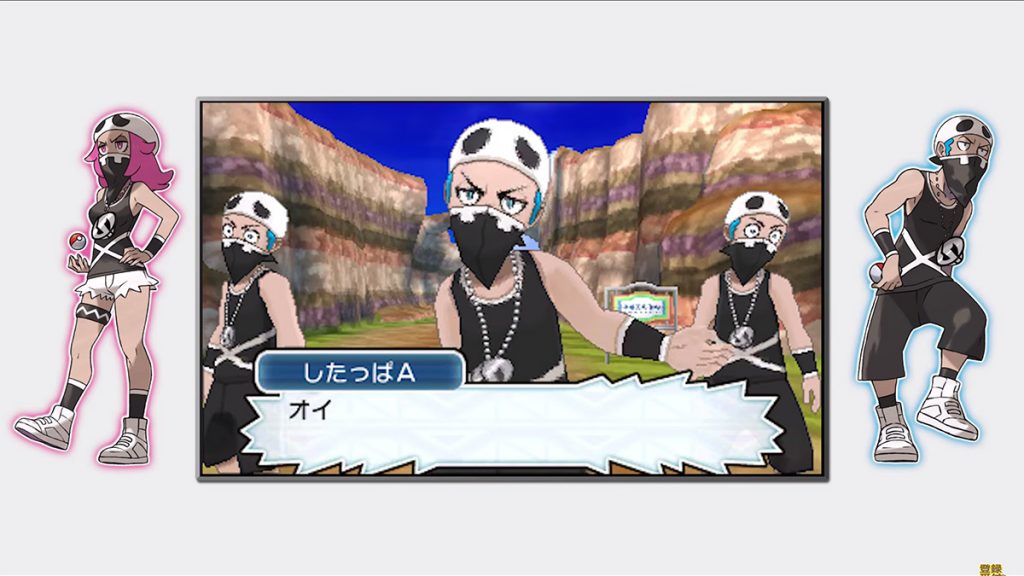
One of my favorite additions to the entire experience is the new spin on the series staple that is the Pokédex. This time around, it’s possessed by a Rotom, allowing it to speak with you and occupy your lower screen outside of battle. Its friendly banter and face were always welcome, as were the ways it displayed my catalogued Pokémon. The upgraded Rotom Pokédex even allows trainers to stop and take pictures at designated spots, uploading them to an in-game social media site where they can be upvoted (with amusing comments flooding your screen) or downloaded to your SD card to share with the real world. All of this is superfluous from a game perspective, but makes the experience that much more pleasant and vivid. It’s a development that feels right at home in the similarly alive Alola region, and I hope they and this connection to the in game world becomes the new series standard.
Just as Alola is unlike any region before, your adventure through it is also a new experience. Progression is not rooted to the “eight gyms, Elite Four, champion” system that every main line game before has held to. Instead, you take on the Island Challenge, a tour across the region with unique challenges to face. There are still strong Pokémon to battle and themed trainers tied to the types represented, but the trials you face are more varied. This can range from tracking down specific items in a given space to watching a trio of Marowak perform dances and needing to determine what was different each time. While occasionally they were simplistic, their final challenges all managed to be on par with past gym battles.
Each trial shares the element of a “Totem Pokémon” that you must defeat to complete it. Befitting their significance, they begin the battle by increasing their stats immediately and also call upon other Pokémon to aid them, turning these battles into two-on-one encounters against you. It manages to maintain the thrill that always came with facing off with a gym leader’s “main” Pokémon while doing away with the oftentimes tedious string of trainers that would come before them. As far as more traditional gym-style battles go, once all the trials on an island are completed, you can face off with the Kahuna. The strongest trainer on the whole island, these are now so impactful that it takes a series of trials to build up to the showdowns themselves.
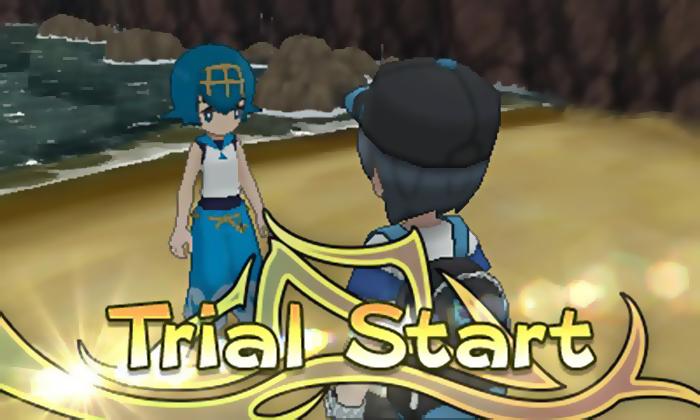
What’s nice and new beyond the sea
There are plenty of new refinements to existing ways players take on their journey with additional features for battling, managing, training, traveling and bonding with your Pokémon making their debuts in Sun & Moon. Z-Moves represent a new way to power up your Pokémon mid-battle, seemingly replacing Mega Evolutions. Instead of bolstering a single Pokémon from a small pool of available options for the rest of the battle, it’s a single attack that can come from any Pokémon holding the corresponding Z-Crystal items, usually gained by completing trials. This allows any Pokémon a chance to shine and can be entertaining and useful trump cards, but lose the greater sense of empowerment that came from Mega Evolutions. While there aren’t any new Mega Evolutions this time around, certain Pokémon do have exclusive Z-Moves, such as the final starter evolutions and notable, popular choices like Pikachu and Eevee. I definitely enjoyed these options in particular as they come off as more creative and specialized than the standard Z-Moves.
The battle interface has also seen an overhaul, with certain welcome tweaks making it both convenient and visually pleasing. The striking colors and designs on the lower screen during battles are a great aesthetic, and the more dynamic presentation found throughout the game extends to shifting camera angles, greater amounts of animation, visible trainers, and world-accurate backgrounds during battles. While 3D is nowhere to be found, the battles run smoothly by default and make the whole experience tighter. Poké Balls can now be quick-selected with the Y button, and if a Pokémon is caught while your party is full, you can choose to add it to your party right then and there instead of dealing with the PC, even allowing you to go over it and your existing parties stats before making your decision. Stat changes and other effects can also be checked on the lower screen now, meaning trainers no longer have to keep track of moves or abilities that alter stats when they happen. Whether moves are super effective or not are also shown after encountering a Pokémon once, making consulting type charts a thing of the past.
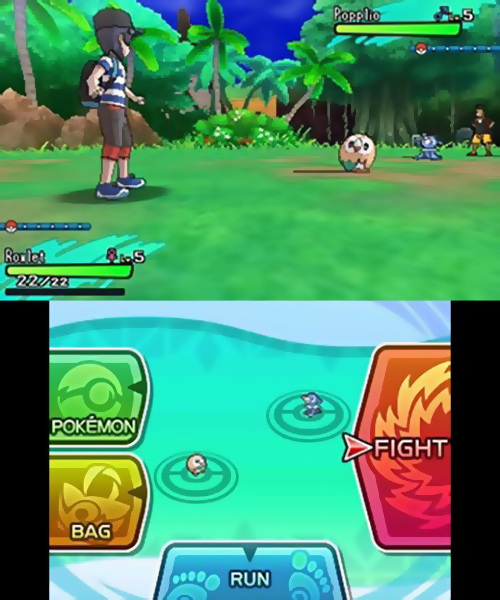
Replacing horde battles is the “call for help” feature introduced with your first Totem Pokémon battle. After this point, almost any Pokémon can do this, and while it offers great opportunities for training and can even occasionally bring rarer Pokémon out of hiding, it also can make battles last a bit too long or effectively block you from catching a Pokémon you’re after, as you can’t use a Poké Ball if there are two Pokémon on the opposing field. These aspects end up making the feature more tedious than challenging at times, but the benefits that are present in the system are welcome. By chaining these calls for help, sometimes evolved Pokémon or even Pokémon exclusive to the feature will come along – and greater experience and EV yields can come of chaining these within one battle. Still, I found them happening all too frequently, which more often than not slowed down whatever my current goal was at the time.
Battle Royals have been added as a new form of battle where four trainers face each other simultaneously. You’re able to target and be targeted by any of the Pokémon out on the field, with points being gained or lost as they’re knocked out. The battle’s over once any one trainer is out of usable Pokémon, and whoever has the most points left wins. There’s a level of strategy involved with the mode that makes it intriguing and I can definitely see myself trying it with friends. That said, it doesn’t feel like a mode that’ll stick around, being a fun aside but nothing that revolutionizes the games.
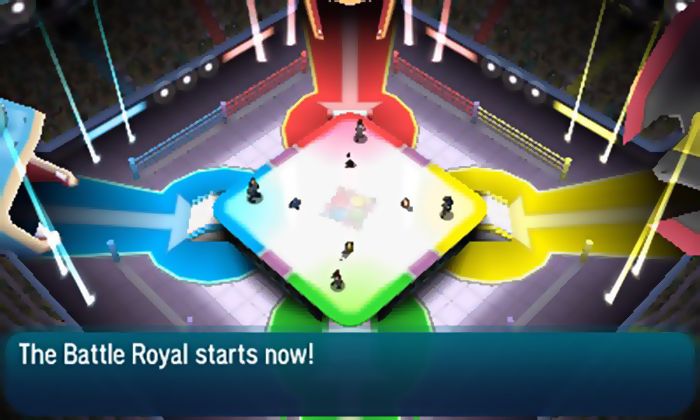
The Poké Pelago comes along as another new feature, using the Pokémon currently in your PC boxes to gather items and even new Pokémon. This all happens automatically on a series of tiny islands that can be visited anytime, anywhere in-game once a certain point is reached in the story. By gathering beans from the first island available, you can add new islands that provide benefits such as leveling up Pokémon or raising their happiness. I love this feature, as while it isn’t particularly engaging it’s a fun thing to check in on and manage that makes my non-party Pokémon feel involved. I’d liken its feel to a time and resource based mobile games, albeit a completely free one that’s not required at any point. It’s a new way to interact with my Pokémon, which is always welcome.
Linking up with people and Pokémon alike
Gone are the days of HM slaves, as rather than requiring specific moves to get around the world Sun & Moon introduce the Ride Pager. With a few button presses, a helpful Pokémon comes along to get you over difficult terrain, not even needing to be caught by you. Rather than need to teach a compatible Pokémon Fly and have it in my party to fast travel, you can simply page a Charizard that will swoop in and give you a lift. Not only is this convenient and flashy, but it also reinforces the bond between trainers and Pokémon continuously emphasized in the Alola region.
Speaking of bonding with your Pokémon, Pokémon Amie is back as “Pokémon Refresh.” While it still allows trainers to pet and feed their Pokémon treats, it can also remove negative status conditions after battle. Likewise, it will (non-intrusively) prompt you if a Pokémon might be after a little more attention at a given moment, meaning you need not shuffle through menus to bring some love. Simply tap a button after a battle when the prompt is up and you jump right into the mode. These simple changes have me loving a feature that I almost completely ignored in X & Y, allowing me to enjoy adorable animations, as well as in-battle benefits once my Pokémon are feeling properly spoiled.
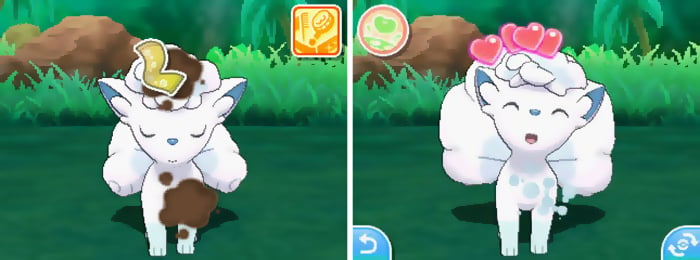
Pokémon was founded on the basis of connectivity between players and that tradition of excellence is still found in Sun & Moon. Fans of Black & White’s Join Avenue can say Alola to the Festival Plaza. With a press of a button, you’re instantly taken to a self-developed hub where other trainers can visit, use your facilities and make requests. By fulfilling them, you can earn Festival Coins to further grow your Plaza. It’s also provides a means where you access multiplayer trading and battle options, as well as the returning Global Link and other internet-based features. I may not enjoy the Plaza’s development features as much as Join Avenue’s, but tying it to all the internet features makes it feel more important – and being able to access it via the menu ensures trainers can check in without any hassle.
Praise the Sun!
As tempting as Lunala was, I picked up Sun to enjoy the exclusive things it brings to the seventh generation of Pokémon. This, of course, this means I’m encountering Solgaleo as the game’s main legendary, and it also changes (or rather, maintains) certain other aspects. Pokémon Sun’s in-game world reflects the time found on your 3DS’ internal clock, meaning if your system is in a daytime hour so too will Alola be daytime in your game. Moon, on the other hand, shifts this by 12 hours, meaning real world day will be in-game night and vice versa. Anyone put off by the idea of your waking hours being mostly nighttime, Sun is the recommended choice. As there are certain Pokémon more common at certain times of day, it also affects what you may see more of from route to route. This also extends to the trials: the very first in the game has the same set up across versions, but with different Pokémon present depending which you’re playing.
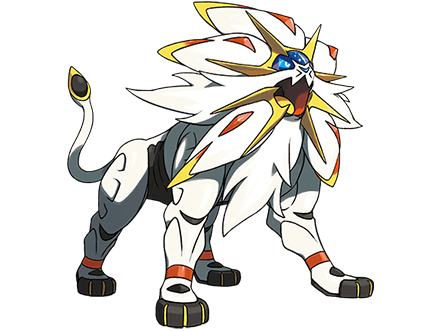
Version-exclusive Pokémon return as always, and I personally feel the healing rays of the Sun bring the better selection. Alolan Vulpix is one of the cutest new Pokémon and it’s only available in Sun. Likewise, the also adorable Rockruff evolves into two distinct forms pending which version you’re playing, with Sun providing the fast, yet frail, Midday Lycanroc. With few Fighting and Fire-types to be found amongst Alola’s additions to the Pokédex, Sun also allows players the chance to catch Passimian and Turtonator in the wild meaning fans of those types may get a little more out of this more tanned version. Other differences to be found include differing Ultra Beast encounters, as well as more version-exclusive Pokémon from older generations across the region. It’s always a matter of personal preference, but as someone who was pretty set on getting Moon from day one, my last minute switch to Sun has not been regretted.
The setting sun
I’ve absolutely loved my time with Pokémon Sun, and I feel it stands as one of the few 3DS games I would consider a must own. For all the advancements and additions I’ve mentioned, it never loses its identity as a Pokémon game.
Pokémon Sun & Moon represent both a step forward into new, yet familiar, territory and a fitting celebration of the franchise’s 20 year history. The presence of a central identity and vision for the game’s world make the experience enjoyable throughout, and this all pushes it into a class of its own within the series. With a narrative and recurring characters that remained worth exploring throughout the story holding up the game’s pace, it’s already worth recommending. The highest praise, however, goes to the refinements to the existing Pokémon gameplay with an amount of polish that makes this pair of games shine as bright as their names would suggest.
Simply put, this is what Pokémon should be, and I sincerely hope that the future of this series that has meant so much to me for the greater part of my life keeps evolving just like I have.
Want to see what we think about Pokémon Moon? Check out our review dedicated to Moon here!
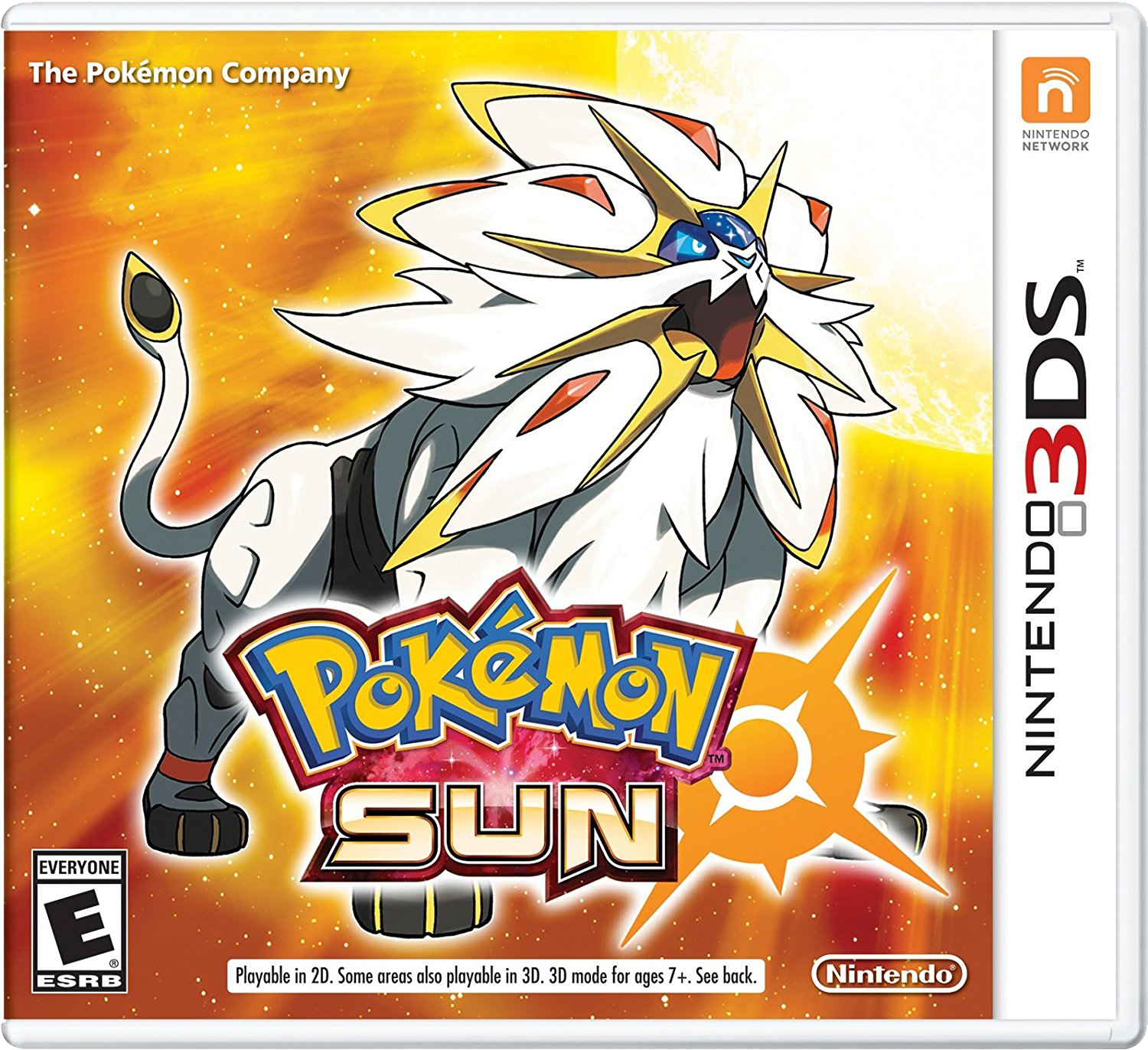
System: Nintendo 3DS
Release date: November 18, 2016
Categories: Action, Role-playing game
Publisher: The Pokémon Company
Developer: Game Freak
